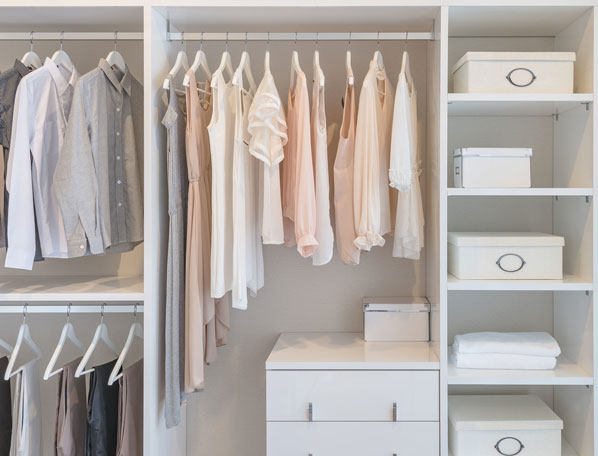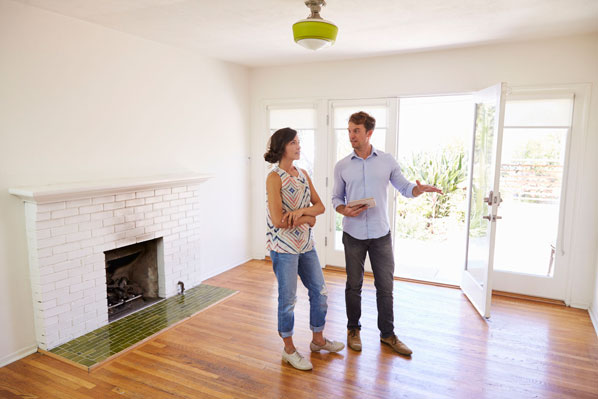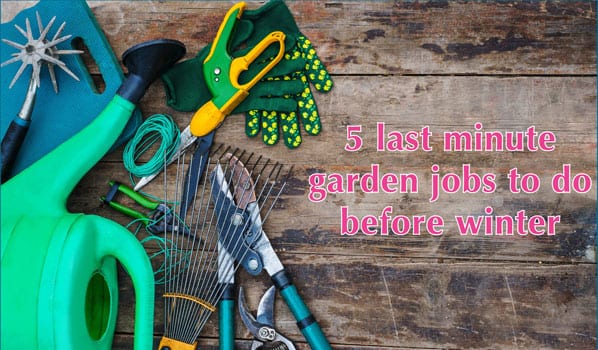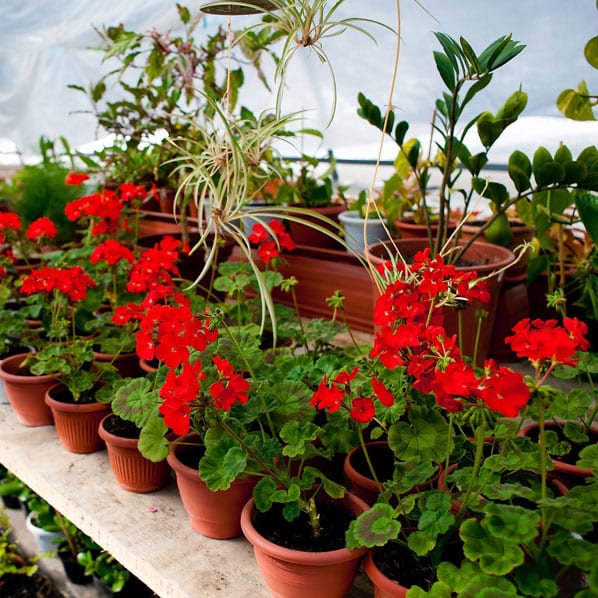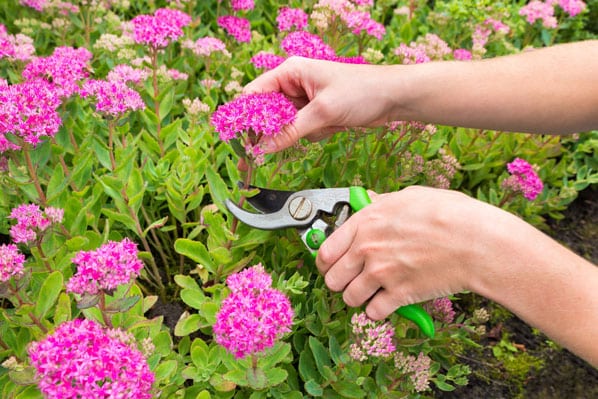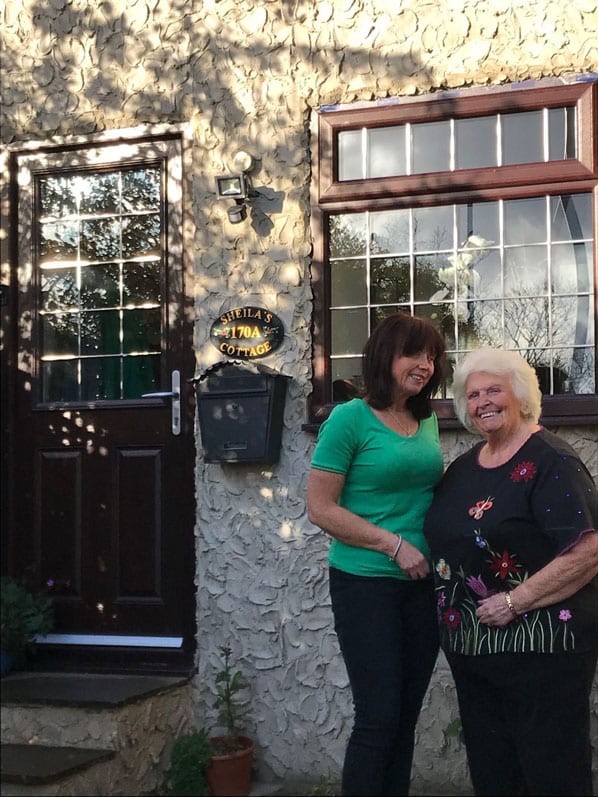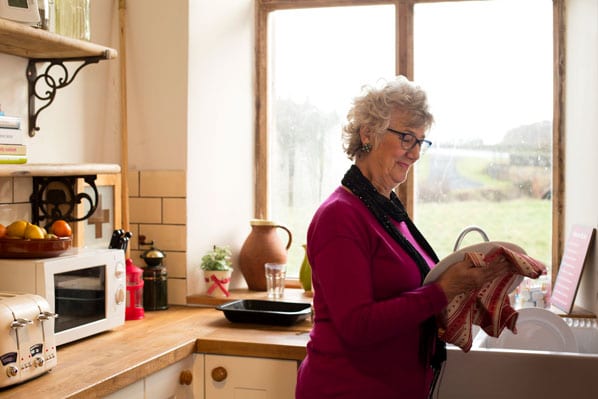As far as home-improvements go, walk-in closets are certainly a luxury - but that doesn't mean you can't seriously consider it. By Luke Rix-Standing.

When considering a property, for most of us, walk-in closets are probably not at the forefront of our minds. Not that we don’t like the idea of them – but they’ve traditionally been seen as a luxury few can afford, more fit for a Great Gatsby adaption or the castle of a Bond villain.
Creating that walk-in wardrobe of dreams, however, might be a lot more doable than you think. It’s a great option for making use of a small space, whether it’s a neglected cubby or an unused ‘spare room’ that’s really not at all big enough for anything else.
We’ve pulled together few tips to get you started, from the flagrantly flat-pack to the outrageously opulent…
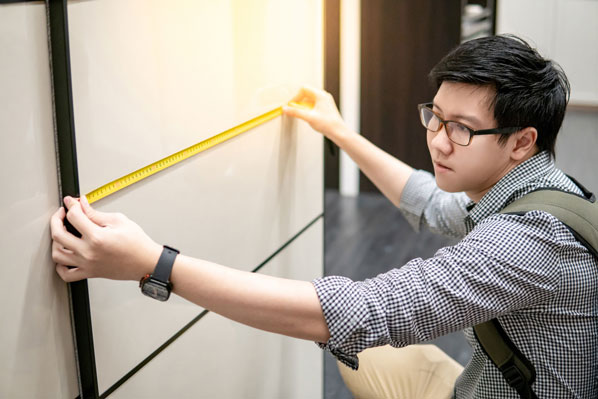
Start with a sartorial stocklist
If you’re considering a walk-in closet, make sure it’s for the right reasons. Generally speaking, this is about something you really want personally, rather than adding value. “When adding value to a property, every square-foot counts,” says Julian Prieto, CEO of property renovation and refurbishment specialists, EDGE2 Properties (myedge2.com). “And in the UK, real estate is about how many bedrooms and bathrooms you’ve got. This kind of project is usually for assets people want to live in for 10 or 20 years.”
Walk-in closets are generally purpose-built and vary enormously based on space, budget and need. There is no catalogue case study or IKEA starter-pack that can construct a walk-in closet over a weekend – you’re going to have to think carefully about what will best work for you. This will determine the design of the space.
“Rule number one is to understand your own wardrobe,” says Prieto. “You need to be able to plan your walk-in closet around what you have and what space you need to allocate.”
A working professional might prioritise clothes rails for hanging suits and shirts, for example, while an avid shoe collector may want a pull-out shoe rack, or perhaps an area of cubby holes for artful storage.
If you’re going to go to the trouble of building a walk-in wardrobe, it needs to perform perfectly, and empty space will likely ruin the aesthetic. Resist the temptation to go overboard on baskets, drawers and other accoutrements – the majority of wardrobes will need to maximise hanging space.

Consider how to make best use of the space
Now you know what your room needs to accommodate, it’s time to go about fitting it into the available space. This will be slightly different for everyone, but unless you’re a rich list regular or minor royal (“I’ve built closets at around 300-square metres,” says Prieto), we’re assuming it won’t be particularly big.
“There are some rules of thumb when it comes to small spaces,” says Prieto. “I would always suggest using just one wall and leaving the opposite side free – if there are two sides that are too close to each other, you won’t be able to see your own clothes. If that’s not an option, I suggest an L-shape, taking up one side and the front.”
Rather than using up floor area, the key is to maximise vertical space – large wooden units with compartments can help utilise every inch, stretching from floor to ceiling. Mirrors are the oldest trick in the book for doubling visual space, and putting one on the far wall allows you to preen and pose from any part of the room.
Unless you’re victim to a major moth problem, consider going door-less. “That’s why it’s called a walk-in closet,” says Prieto, “so you can walk in and see all your clothes at once. If you can afford it, you could put in glass sliding doors – they open sideways, so don’t get in the way when you access your garments.”

Don’t rush the planning
Walk-in closets may sound like the preserve of the rich and famous, but they can be as simple as shelving units lined against a wall. To do-it-yourself, the proof is in the planning – working out dimensions and carefully apportioning space.
“It can be quite fun,” says Prieto, “and shouldn’t take more than two weeks to put together. The planning should take longer – when you get into that room, you need to know exactly what you’re doing.”
If you go bespoke, you’re entering a brave new world of opportunity – and of cost. Prieto says a small, simple closet tends to start at around £2,000, while those at the pinnacle of high-end can check in at £65,000-£70,000. “We’re talking 300-square metres, bespoke furnishings, good carpets and a chandelier in the middle,” he says. “Everything done down to the last detail.”

The ‘ultimate luxury’
Of course, if you have a bank vault to rival that of Scrooge McDuck, then your options are almost limitless. “Hidden safes are common for high-end customers,” says Prieto. “Recently, I was asked to put a jewellery safe hidden in the space between wardrobes. It was supposed to open vertically with a key card – when she said she wanted it, I had to ask if she’d seen it somewhere because I didn’t know where to go for it. We had to get it from Switzerland and it took four months and £25,000 just to fit it. I thought it was bonkers!”
That sort of scenario might be totally unrelatable for most of us, but with a bit of planning and imagination, a walk-in closet could be an achievable goal.
“It’s the ultimate luxury – but you don’t need to spend an arm and a leg,” says Prieto. “Research what you need, take stock of what you have, and measure the space you’ll be fitting. That’s all you need to do.”


